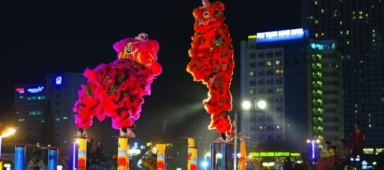Fourth-generation Teochew opera practitioner preserves the art form through Malaysia’s first opera and puppet opera museum

The tension in the audience mounts as the intricate story threads unfold. Can the courtesan with a heart of gold escape her murder charges, or is she fated to a wintry death? Will her imperial judge lover choose career mobility, or risk it all for love?
Delivering universally beloved themes through elaborate costumes, atmospheric music, flamboyant make-up and more twists and turns than an entire season of a Korean drama, Teochew opera was one of the most popular performance art forms in Malaysia during its heyday. But with the advent of modern entertainment, retirement of the original practitioners and the challenge of the difficult Teochew dialect itself, it is in danger of vanishing. If in the past they ran year round, shows are now typically limited to occasions like the Hungry Ghost Festival, and even then, they are performed by Chinese or Thai travelling troupes.

One of its remaining flagbearers is Penang-based Goh Hooi Ling, the fourth-generation descendant of a Teochew family who brought the arts to Penang when they migrated from China in the late 19th century.
Goh’s passion for the arts led her to Shantou, where she refined her performance, stage posturing and singing. In 2009, Goh started her own opera troupe, providing a glimmer of hope at a time when many troupes were calling it quits, but ultimately she had to disband in 2013 due to financial constraints. “Maintaining a troupe is resource and labour-intensive,” explains classical history scholar Alex Chew. “To perform a full-scale opera, you need actors, musicians, handymen, a cook – a typical troupe can easily have 30-40 members.”
While contemplating her next move, it struck Goh that her family had accumulated a wealth of opera paraphernalia – exotic costumes, musical instruments, backdrops and stage props. Moreover, she had always yearned to change the misconception that Teochew opera is only meant for festive occasions. “This beautiful art form is so much more than that,” she says.

And so in 2014, Malaysia’s first museum dedicated to Teochew puppets and opera was born in a former Teochew social club in Penang’s Heritage Core Zone. For a modest fee of USD2.60 (RM10) per entry, the compact museum offers a culturally immersive experience. Thoughtfully captioned and laid out, a collection of articles and literature conveys the history and beauty of the art form; one glass case even contains precious original manuscripts that actors read from.
“Typically, performances are based on an abridged version of the script or a certain scene, such as the climax,” explains Chew, who also acts as assistant curator.
But it’s the props that demonstrate how Teochew opera is truly a masterclass in expressing a whole range of emotions, using just one or two details. For example, beards are shorthand for a character’s traits – red for a barbarian, smooth and white for a scholar, and the protagonist can always be identified by his long flowing sleeves. Shoes, meanwhile, have platforms to give more height to women playing male characters.

Goh’s family is believed to be the last remaining Teochew puppet opera troupe in the country. Her family makes the iron rod puppets by hand. “These days, I find puppet opera to be more interesting. In regular opera, each actor is capable of moving about on their own, whereas these puppets need to be moved by controlling the iron rods. That requires real skills.”
The museum’s collection of iron rod puppets in all stages of robing provides a fascinating insight into why they are constructed in a certain way; the head, limbs, breasts, and shoes are all detachable. When you want to change a character, you just move the head to a new body, so you can change a scene quickly.
I can appreciate these nuances better after watching the show at the museum. It is is staged every last Sunday of the month. My understanding is aided by a TV screen flashing English subtitles, now a common fixture in performances. As the drama hurtles to a favourable conclusion for the protagonist, the audience sighs with relief. Culture – and the love for happy endings – transcends all barriers.





